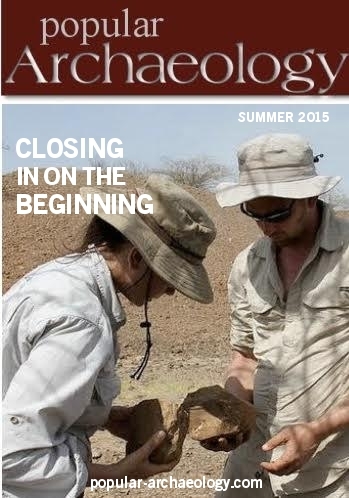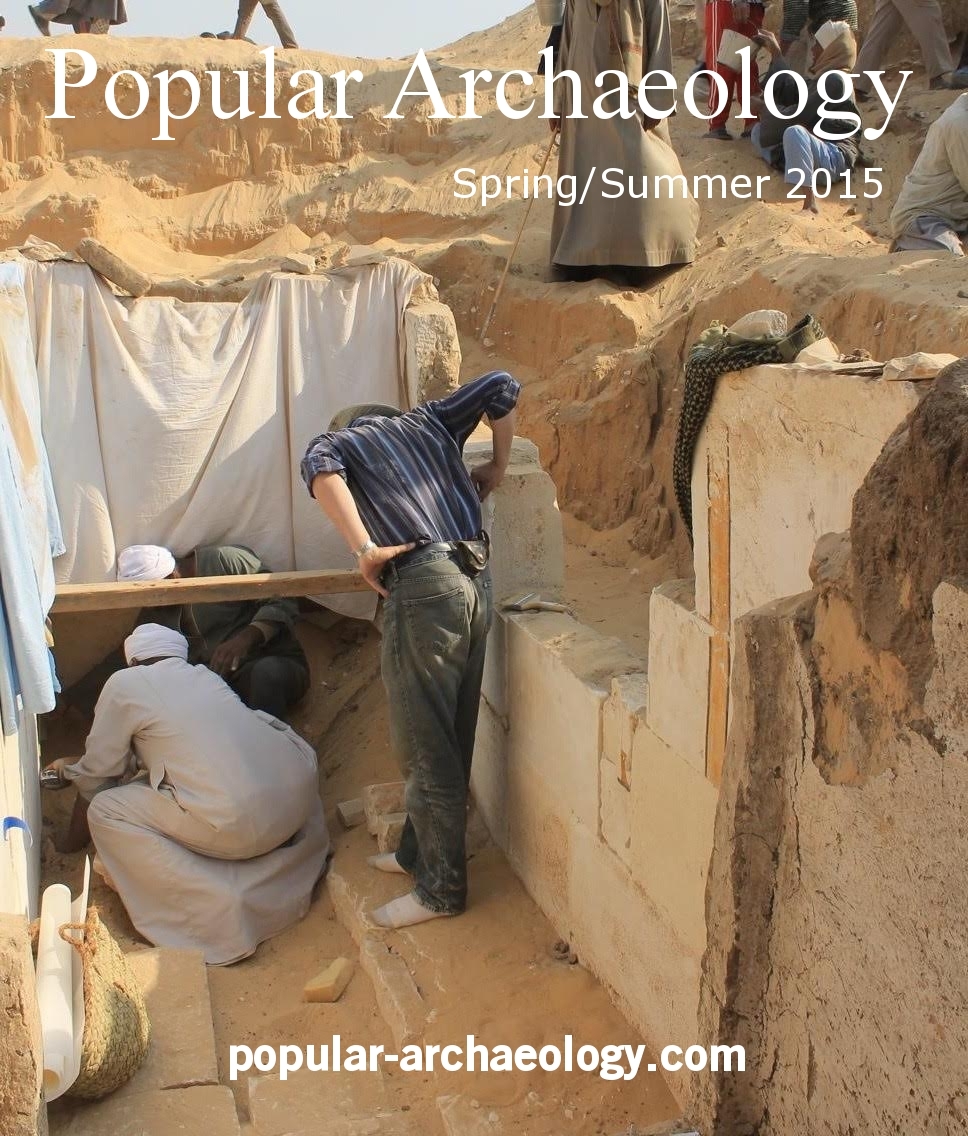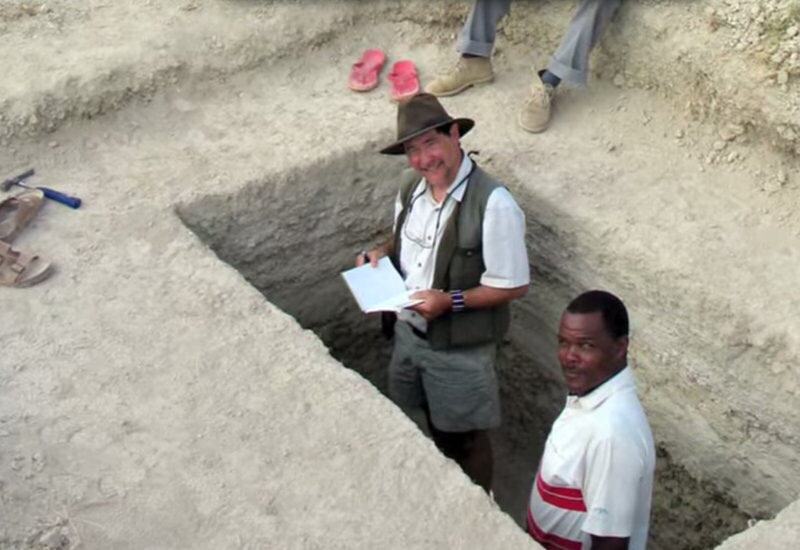
In a newly published paper*, Smithsonian anthropologist Richard Potts and anthropologist J. Tyler Faith of the University of Queensland, Australia, relate in detail the results of years of study defining a predictive model of climate and environmental variability correlated with key changes or stages in human evolution in East Africa and China. The study, in concert with previous studies, challenges some long-held theories about what has driven the mechanisms of human evolution.
The model, say the authors, predicts eight long periods of environmental instability in East Africa correlated with times of hominin evolutionary innovations as a result of natural selection resulting from the variability. The research also included data derived from palynological study in the Nihewan Basin of China, where evidence suggests that early humans survived and successfully adapted to a new, radically changed environment.
“Unstable climate conditions favored the evolution of the roots of human flexibility in our ancestors,” says Potts. “The narrative of human evolution that arises from our analyses stresses the importance of adaptability to changing environments, rather than adaptation to any one environment, in the early success of the genus Homo.”**
The paper is at least in part a reflection of the core of Pott’s years of research in East Africa and China, at sites such as the Olorgesailie Basin, the Turkana and Olduvai Basins, the Tugen Hills and the Hadar Basin, all in East Africa; and the the Nihewan Basin in China. Much of his research has focused on testing what he has penned the variability selection hypothesis, which proposes that it was adaptability to change, not the long-held notion of specialization, that was a key to human evolution. It challenges the long-held “savanna hypothesis”, which has suggested that our genus, Homo, emerged and evolved at least in part due to adaptations (such as walking upright, dietary change, a larger brain and body, and making tools) as a result of a major, gradual climate change from a warmer, wetter forest environment on the African continent to a cooler, drier one that resulted in the spread of a savanna grassland. This latest study report follows a recent study published in the journal Science, wherein he and co-author colleagues Susan Antón, professor of anthropology at New York University, and Leslie Aiello, president of the Wenner-Gren Foundation for Anthropological Research, reported results from comprehensive research on shifting paleoclimates, ancient stone tools, isotopes found in teeth, and cut marks found on animal bones in East Africa. The findings have supported an emerging new consensus that suggests a rethinking of some of the long-held assumptions about human origins and evolution.
____________________________________________
Richard Potts and colleagues in the field in East Africa. Screen shot from video, see below.
____________________________________________
The study* is currently published ‘in press’ in the Journal of Human Evolution.
___________________________________________________________
___________________________________________________________
*Richard Potts, J. Tyler Faith, Alternating high and low climate variability: The context of natural selection and speciation in Plio-Pleistocene hominin evolution, Journal of Human Evolution, 25 August 2015 doi:10.1016/j.jhevol.2015.06.014
**From a press release of the Smithsonian Institution, Smithsonian scientist and collaborators revise timeline of human origins, 3 July 2014
Cover image, top left: Scientist surveying in the field in East Africa. Screenshot from video, see above.
___________________________________________________________
 Read more in-depth articles about archaeology with a premium subscription to Popular Archaeology Magazine.
Read more in-depth articles about archaeology with a premium subscription to Popular Archaeology Magazine.
In addition, the latest Popular Archaeology ebook is now available.
______________________________________________
Travel and learn with Far Horizons.
____________________________________________
 This richly illustrated ebook version of a recent Popular Archaeology issue includes the following stories: The discovery of the tomb of a previously unknown pharaoh that is shedding light on a lost ancient Egyptian dynasty; how genetics is revolutionizing what we know about human evolution and our prehistoric past; one scholar’s controversial ‘New Chronology’ and how it supports the historicity of the biblical Exodus; how archaeologists are unearthing new history in Williamsburg, Virginia, a seat of British colonial power in 18th century America; the discovery of the remains of a major Roman legionary base in Israel; the unearthing of an ancient Judean fortified settlement in the borderlands between the biblical kingdoms of ancient Judah and the Philistines; and how archaeologists are uncovering evidence of what may have been an important administrative center of Judah during the 8th century BCE. Now available from Amazon.com!
This richly illustrated ebook version of a recent Popular Archaeology issue includes the following stories: The discovery of the tomb of a previously unknown pharaoh that is shedding light on a lost ancient Egyptian dynasty; how genetics is revolutionizing what we know about human evolution and our prehistoric past; one scholar’s controversial ‘New Chronology’ and how it supports the historicity of the biblical Exodus; how archaeologists are unearthing new history in Williamsburg, Virginia, a seat of British colonial power in 18th century America; the discovery of the remains of a major Roman legionary base in Israel; the unearthing of an ancient Judean fortified settlement in the borderlands between the biblical kingdoms of ancient Judah and the Philistines; and how archaeologists are uncovering evidence of what may have been an important administrative center of Judah during the 8th century BCE. Now available from Amazon.com!
____________________________________________







